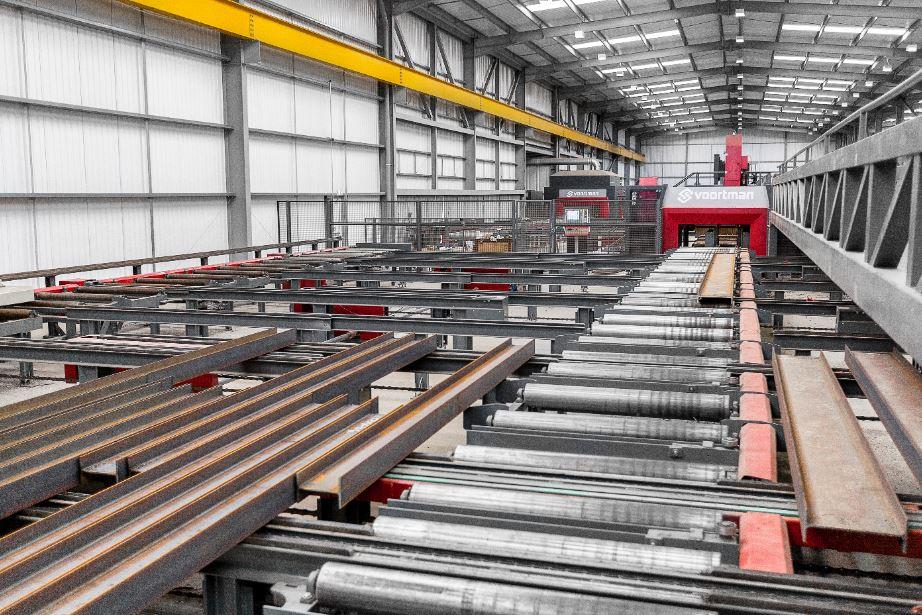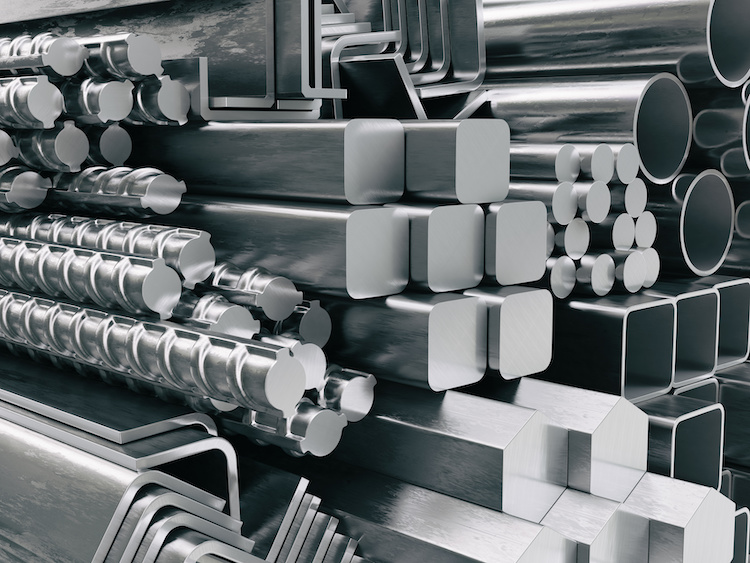Reliable Steel Fixing Solutions: Ensuring Structural Honesty
Reliable Steel Fixing Solutions: Ensuring Structural Honesty
Blog Article
Innovative Fads in Steel Manufacture: Enhancing Durability and Accuracy
In the world of steel manufacture, the pursuit of sturdiness and precision has actually caused a wave of cutting-edge trends that are improving the industry. From innovations in welding innovations to the assimilation of robot automation in construction procedures, the landscape of steel manufacturing is evolving swiftly. High-strength alloy advancement, paired with the usage of 3D modeling and simulation software, is pushing the borders of what is attainable in regards to structural stability and accuracy. The expanding emphasis on sustainable techniques in steel production is not only driving effectiveness yet also promoting an extra environmentally mindful strategy to fabrication. These patterns are not just shaping the here and now yet also laying the groundwork for the future of steel manufacture, assuring further enhancements in longevity and precision.
Advanced Welding Technologies
In the realm of steel construction, the adoption of innovative welding innovations has substantially changed the sector's strategy to achieving superior quality and accuracy in architectural welds. Advanced welding modern technologies, such as laser light beam welding and rubbing mix welding, have actually become game-changers in the area. Laser light beam welding uses a focused laser beam of light to sign up with metal elements with exceptional precision and rate, making it excellent for complex layouts and slim products. On the other hand, rubbing mix welding produces extremely strong bonds by mechanically intermixing the particles of the products at the joint, getting rid of the need for thawing the steel. These innovations offer numerous advantages, including reduced heat-affected areas, very little distortion, and enhanced mechanical residential properties in the welded joints. By leveraging these advanced welding strategies, steel producers can elevate the durability, stamina, and precision of their architectural welds, satisfying the increasingly requiring requirements of modern-day building projects.
Robotic Automation in Construction
Embracing robotic automation has actually come to be a cornerstone of contemporary steel manufacture practices, improving and enhancing procedures efficiency across the market. Robotics are changing the way steel elements are produced, using unparalleled precision and speed while minimizing human mistake. These automated systems can take care of repeated jobs with regular precision, leading to higher high quality final result.
One secret advantage of robotic automation in steel construction is the capacity to function all the time without tiredness, dramatically raising manufacturing result. This continual procedure decreases downtime and increases task timelines, inevitably conserving prices for makers. In addition, robotics can be configured to carry out elaborate tasks that may be challenging or hazardous for human employees, enhancing security in the workplace.
Furthermore, robotic automation makes it possible for seamless integration with various other digital innovations, such as computer-aided design (CAD) software application and Net of Things (IoT) systems (steel fabricators melbourne). This interconnected strategy enhances communication in between various stages of construction, maximizing operations and guaranteeing real-time tracking and control. As the steel manufacture industry remains to develop, robot automation attracts attention as a transformative force driving efficiency and precision in producing procedures

High-Strength Alloy Advancement
The improvement of high-strength alloy growth in steel manufacture is improving the sector's approach to enhancing material resilience and performance. High-strength alloys are engineered to exhibit superior mechanical homes, such as boosted tensile stamina, strength, and rust resistance compared to traditional steel grades. By including these innovative alloys right into construction processes, makers can produce elements that stand up to higher stress degrees and harsh settings, causing even more resilient and reputable final result.
One key advantage of high-strength alloy advancement is the ability to reduce product thickness without compromising architectural stability. This not only causes lighter-weight components yet also adds to cost financial savings and enhanced performance in construction and assembly processes. Additionally, the improved strength-to-weight proportion of these alloys enables the design and building and construction of structures with greater load-bearing capabilities while minimizing total weight.
3D Modeling and Simulation Software
Advancements in steel navigate to this website fabrication processes have been substantially driven by the assimilation of cutting-edge 3D modeling and simulation software devices. These devices permit makers to develop thorough digital versions of look at this web-site their tasks, allowing them to picture the last item with accuracy before any type of physical job starts.

Sustainable Practices in Steel Manufacturing
Including lasting practices right into steel manufacturing processes is necessary for minimizing environmental influence and guaranteeing long-term resource schedule. One essential lasting practice is the fostering of energy-efficient innovations to reduce greenhouse gas discharges during the steel production procedure. This includes using renewable resource sources, such as solar or wind power, to power steel plants and implementing energy-efficient tools to optimize power usage.
An additional crucial facet of sustainable steel production is the accountable sourcing of basic materials. This entails guaranteeing that the iron ore and various other resources made use of in steelmaking are obtained from ethical and environmentally friendly resources. By advertising transparency in the supply chain and sticking to rigorous ecological requirements, steel manufacturers can lessen the negative effects of source removal on local environments and communities.

Final Thought
To conclude, the ingenious fads in steel manufacture such as sophisticated welding innovations, robot automation, high-strength alloy advancement, 3D modeling and simulation software, and sustainable practices are boosting the resilience and precision of steel products. These improvements are transforming the steel fabrication market by improving effectiveness, sustainability, and high quality. It is clear that the future of steel construction exists in embracing these advanced innovations to satisfy the demands of modern-day construction and production industries.
In the realm of steel manufacture, the search of sturdiness and accuracy has actually led to a wave of innovative patterns that are improving the sector.In the realm of steel fabrication, the fostering of advanced welding technologies has dramatically changed the industry's strategy to accomplishing superior high quality and precision in structural welds. As the steel construction market proceeds to develop, robot automation stands out as a transformative pressure driving effectiveness and accuracy in making procedures.
In addition, reusing and recycling steel scrap and waste products play a substantial function in improving the sustainability of steel manufacturing. steel fabrication melbourne.In verdict, the ingenious patterns in steel manufacture such as sophisticated welding innovations, robotic automation, high-strength alloy development, 3D modeling and simulation software, and lasting techniques are enhancing the longevity and precision of steel products
Report this page